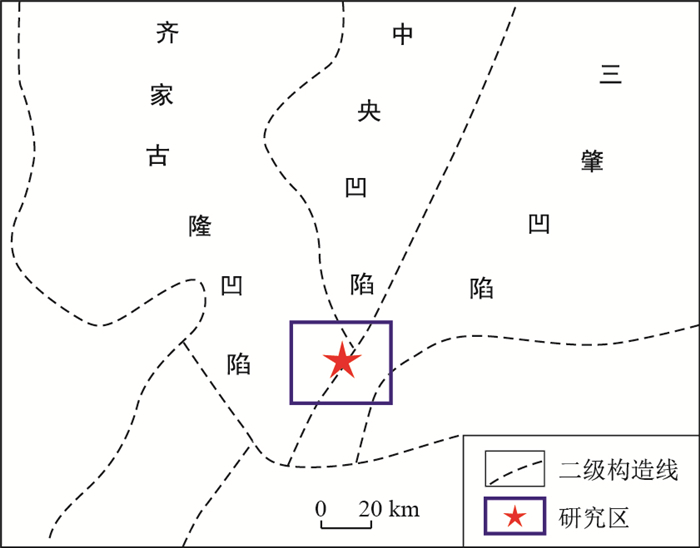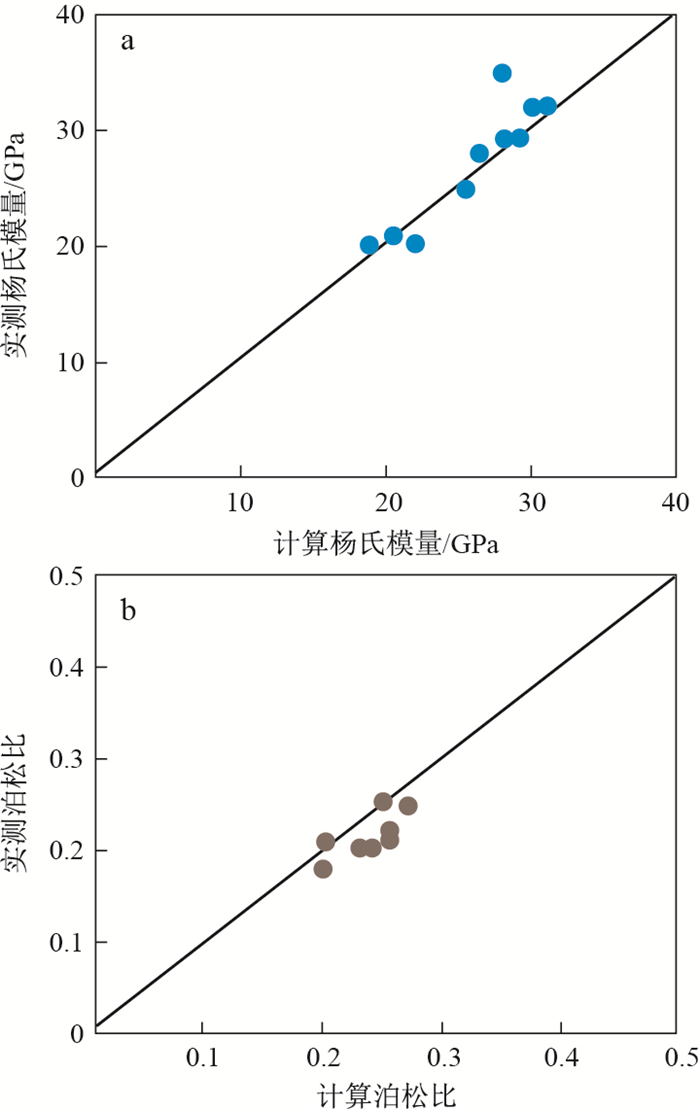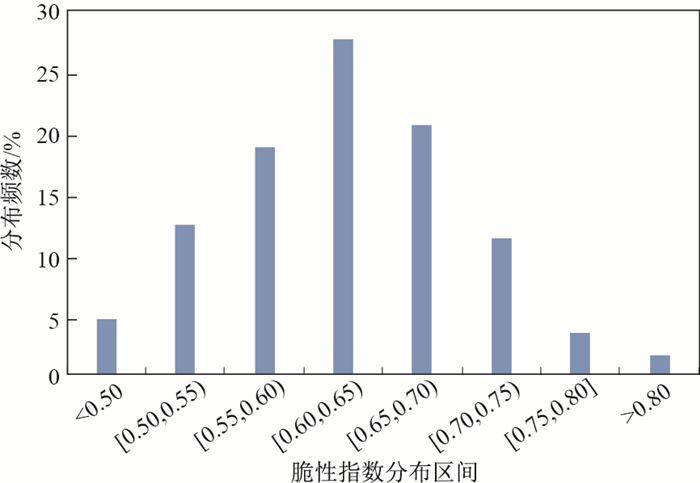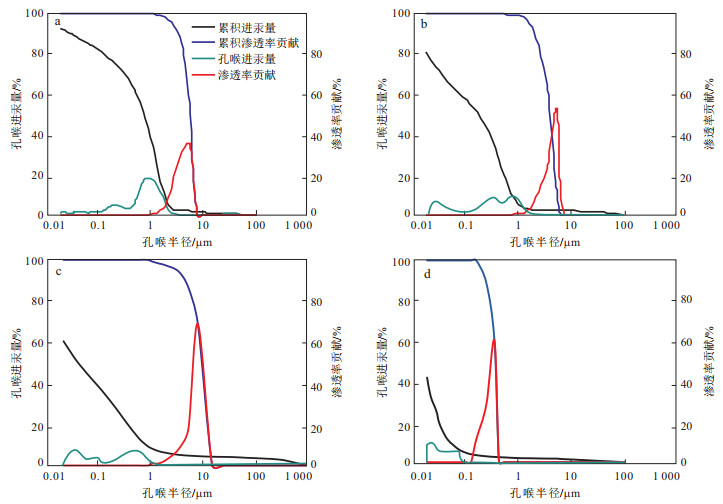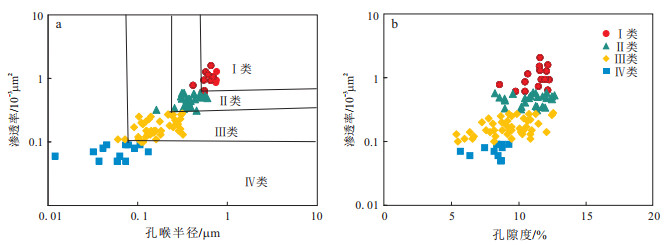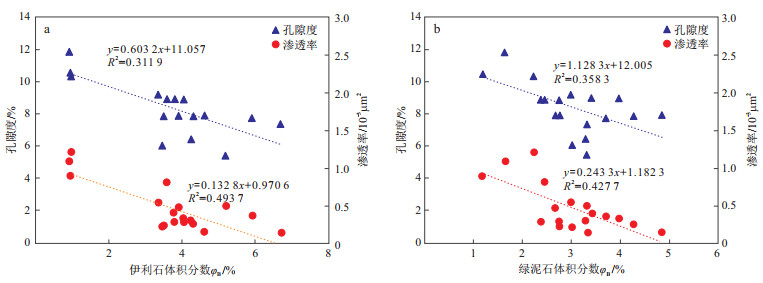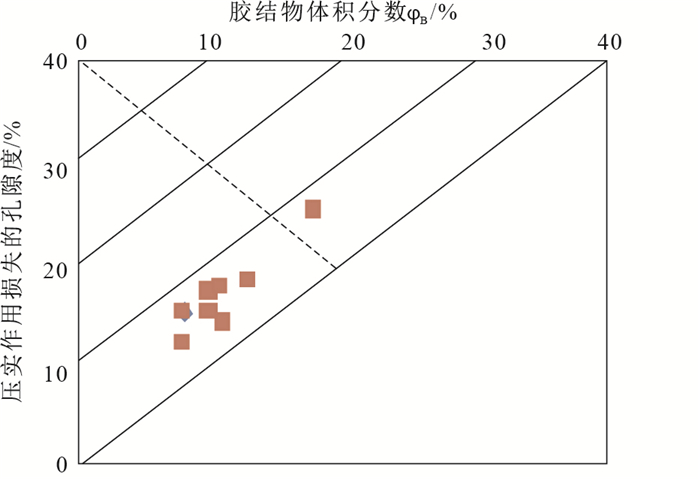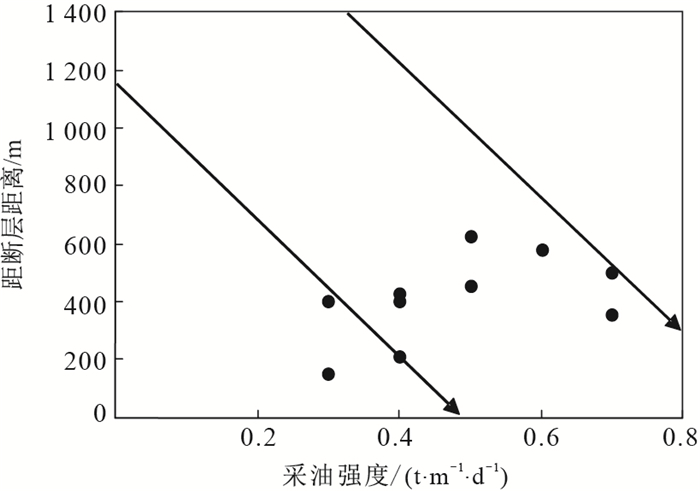Reservoir characteristics and economic sweet classification scheme of Fuyu reservoir in Daqing Oilfield
-
摘要: 大庆油田扶余油层储量丰富,但是由于储层特征不清以及缺乏科学的"甜点"分类方案,导致研究区"甜点"优选难度大。为了明确研究区储层特征以及"甜点"筛选方案,应用岩心物性测试、全岩分析、铸体薄片、扫描电镜、岩石力学实验、高压压汞实验、测井资料建立了研究区物性和脆性指数计算模型,最终为明确储层特征和"甜点"筛选提供依据。结果表明:①研究区属于特低孔-超低渗致密储层,脆性指数集中在0.5~0.75之间,孔隙结构分为4类,Ⅰ类样品的孔隙度平均大于11%,渗透率平均大于0.7×10-3 μm2,以大孔为主,平均进汞饱和度大于75%,连通性最好;Ⅱ类样品的孔隙度主要为9%~12%,渗透率主要为0.3×10-3~0.7×10-3 μm2,大孔喉减少,小孔喉增加,平均进汞饱和度大于70%;Ⅲ类样品的孔隙度主要为8%~11%,渗透率主要为0.1×10-3~0.3×10-3 μm2,平均进汞饱和度大于60%,连通性变差;Ⅳ类样品的孔隙度主要小于9%,渗透率主要小于0.1×10-3 μm2,平均进汞饱和度小于60%,以小孔喉为主,储集、渗流能力最差。②结合物性、含油性、脆性指数利用灰色关联法建立了研究区经济"甜点"分类标准,Ⅰ类经济"甜点"的综合得分大于0.55,Ⅱ类经济"甜点"得分为0.4~0.55,Ⅲ类经济"甜点"得分为0.25~0.4,无效储层或干层综合得分 < 0.25,并且根据划分标准对井进行验证,发现该标准有效解决了根据测井判断储层是否含油所带来的误差。③沉积、成岩、断层相互耦合共同控制"甜点"的发育。沉积作用控制储层物性和孔隙结构,成岩作用增加了储层非均质性,断层的存在极大影响了储层含油性。该研究成果建立的"甜点"分类模型为研究区"甜点"筛选提供了科学依据。Abstract: The resources of the Fuyu reservoir in the Daqing Oilfield are abundant. Due to the unclear characteristics of reservoir and lack of scientific sweet classification scheme, it is difficult to optimize the sweet in the study area. In order to clarify reservoir characteristics and sweet selection scheme in the study area, this paper uses core physical property, XRD, casting thin section, scanning electron microscope, rock mechanics tests, high pressure mercury intrusion tests and logging data to establish the physical properties and the brittleness model of the study area., which ultimately provides a basis for clarifying reservoir characteristics and sweet screening. The results reveal ① the study area belongs to low hole-ultra low permeability reservoir, brittleness index between 0.5-0.75 and the pore structure of the reservoir in the study area can be divided into four types. Type Ⅰ reservoirs have more large-pore throats and fewer small-pore throats, with a mean porosity is more than 11% and a permeability is more than 0.7×10-3 μm2, the mercury saturation is more than 75% and the connectivity is good. Porosity of type Ⅱ reservoirs mainly locates 9%-12% and a permeability is 0.3×10-3-0.7×10-3 μm2, the mercury saturation is more than 70% and the connectivity is good. Type Ⅲ reservoirs have fewer large-pore throats, but more small-pore throats. The porosity mainly locates 8%-11% and a permeability is 0.1×10-3-0.3×10-3 μm2. The mercury saturation is more than 60% and the connectivity is poorer than type Ⅰ and Ⅱ. Type Ⅳ reservoirs have few small-pore throats, with a mean porosity is less than 9% and a permeability is less than 0.1×10-3 μm2, and the mercury saturation is less than 60% which have poor connectivity and permeability. ② Combine physical properties, oily and brittleness of reservoir and use gray relation method to establish the economic sweet classification standard in the study area. The comprehensive score of type Ⅰ economic sweet is more than 0.55, and the comprehensive score of type Ⅱ economic sweet is in 0.4-0.55, and the class Ⅲ economic sweet in 0.25-0.4. The non-reservoir or dry layer comprehensive score is less than 0.25. The well was verified by the classification standard and found that the standardeffectively solves the error according to the log to judge whether the reservoir contains oil. ③ Sedimentation, diagenesis, and faults interaction control the development of economic sweet. Sedimentation controls reservoir physical properties and pore structure, and diagenesis increases reservoir heterogeneity, and the existence of faults greatly affects reservoir oil. The results establish a sweet classification model to provide a scientific basis for the selection of sweet in the study area.
-
Key words:
- Fuyu oil layer /
- economic sweet /
- pore structure /
- sedimentation
-
随着常规油藏的不断开发,非常规油气已经成为全球研究的热点,致密油是非常规资源之一,被誉为石油行业界的黑金[1-4]。致密油藏与常规油藏有着本质的区别,原油未经过大规模长距离运移赋存,一般需要通过大规模压裂才能形成工业产能[5]。致密油资源在我国分布广泛,主要位于松辽盆地、鄂尔多斯盆地、渤海湾盆地、准格尔盆地[6-12]。对一些老油田来说,随着产量下降,为了保证稳产,勘探开发的思路从常规油藏逐渐向非常规油藏转移。本次研究的是大庆敖包塔油田扶余油层,属于老区块新层系。选择该研究区的原因是因为大庆油田从2012年开始增加对致密油的勘探开发力度,且该区块已探明地质资源量较大,达3 864×104 t。由于研究区目的层属于老区新层系,在该区域目的层研究工作进行较少,目前面临的主要问题是储层特征不清以及缺乏科学的“甜点”优选方案,导致开发上单井产量低。
对致密油来说应用常规“甜点”筛选方法和开采手段难以获得有效的经济效益。前人对储层“甜点”的划分一方面是根据物性划分,另一方面是根据相带进行划分[13-15],但是对研究区扶余油层来说,该油藏成藏模式属于上生下储[16-19],裂缝是油气运移的通道,如果只用物性和相带对“甜点”进行划分会产生很大的误差,比如随着储集层远离烃源岩,油气充注动力减小,靠近烃源岩储层物性下限会小于远离烃源岩储层物性下限,这样会造成同一相带,同一物性类别储层离烃源岩近的砂岩含油,而离烃源岩远的砂岩不含油,如果用同一个物性或相带标准划分“甜点”会导致离烃源岩远的干层被误判为“甜点”。对致密储层而言,其分类评价和“甜点”优选不能完全照搬常规储层的评价方法,与常规储层相比致密储层开发要靠压裂才能获取更好的产能,因此对致密储层评价不仅要考虑地质因素,还要考虑工程因素,只有结合这两者才能做到经济、科学的“甜点”优选[20-25],因此对致密储层“甜点”的划分应该建立综合标准。
本次研究将以松辽盆地敖包塔油田扶余油层为例,结合测井资料以及实验分析明确储层基本地质特征和孔隙结构特征,在此基础上对致密储层的物性“甜点”和含油性“甜点”进行分类,并且建立考虑工程“甜点”的研究区储层脆性计算模型,以方便实用为目的建立研究区经济“甜点”评价模型和分类方案,为油田经济“甜点”筛选提供指导。
1. 区域概况
研究区位于松辽盆地中央坳陷区大庆长垣、齐家-古龙凹陷和三肇凹陷的交界处(图 1)。目的层为扶余油层,烃源岩为上部青山口组(K1qn)泥页岩,供油模式属于倒灌成藏,形成扶余致密油藏[26-27]。扶余油层属下白垩统泉头组四段(K1q4)及泉头组三段(K1q3)上部,地层厚度整体变化不大,目的层总厚度为100~170 m。从上到下可以分为扶一组(FⅠ)(90~100 m)和扶二组(FⅡ)(65~75 m),根据沉积旋回进一步可以细分为5个小层:扶一上(FⅠ上)、扶一中(FⅠ中)、扶一下(FⅠ下)、扶二上(FⅡ上)、扶二下(FⅡ下)。岩性主要为一套灰绿色、灰褐色粉砂岩夹浅灰色、灰绿色泥岩。通过录井资料以及前人的研究成果[26]判断研究区为三角洲平原沉积环境,物源来自西南方向。研究区面积大约35 km2。
研究区扶余油层内共有井41口,其中直井37口,水平井4口,以探明研究区未开发储量,研究区内2口水平井已投入生产,并且获得较好的产量,截至目前两口水平井日产油4.35 t。目前直井只进行试油还未投入生产。从研究区17口直井试油成果来看,直井试油产量低,每米砂体日产油小于0.2 t/(m·d)。
2. 储层基本特征
2.1 岩性特征
对研究区目的层的岩性统计,扶一油层组、扶二油层组岩性主要为岩屑质长石砂岩,含有少量的长石质岩屑砂岩(图 2)。长石体积分数平均为32.8%,岩屑体积分数平均为29.0%,石英体积分数平均为24.3%。黏土矿物以伊利石和绿泥石为主。颗粒成熟度较低,磨圆以次棱角状为主,反映研究区颗粒搬运距离较短。
2.2 物性特征
首先通过实测的物性值建立研究区储层物性计算模型,通过声波时差和岩性密度测井,与实测的孔隙度进行拟合发现均呈较好的相关性(图 3-a,b),因此通过origin软件建立研究区储层孔隙度计算模型[公式(1)],对研究区来说样品的孔隙度和渗透率相关性系数不高,因此利用孔隙度对渗透率进行预测误差会较大。对储层的孔隙结构特征进行研究,得到渗透率主要由孔径大于0.1 μm的孔喉所贡献,利用孔径大于0.1 μm孔喉提供的进汞量乘孔隙度可以得到孔径大于0.1 μm孔喉所提供的储集空间。建立孔径大于0.1 μm的孔隙进汞饱和度与渗透率的关系,发现两者相关性较好。因此用测井曲线建立孔径大于0.1 μm的储集空间的计算模型进而得到适合研究区的渗透率计算模型[图 3-c, 式(2)]。
φ=0.2433AC−22.467DEN+47.928 (1) k=0.0171e0.4025(0.236AC−18.9DEN+36.16) (2) 式中:φ为孔隙度(%);k为渗透率(10-3μm2);AC为测井声波时差值(μs/ft);DEN为岩性密度值(g/cm3)。
根据模型统计出研究区储层的孔隙度和渗透率(图 4-a, b),孔隙度主要集中在5%~10%之间,平均为9.3%。渗透率主要在0.05×10-3~0.5×10-3 μm2之间,平均为0.42×10-3 μm2。图 4-a统计出测井计算的渗透率与实测渗透率的数值,统计误差率在35%左右,和以前测井计算的渗透率相比,误差率从45%降到35%。
2.3 脆性特征
脆性指数大小反映储层可压裂的难易程度,脆性指数越高,越有利于致密油储层压裂和后期开采。明确储层脆性特征是对致密储层“甜点”筛选的关键。目前评价储层脆性指数的方法很多,如脆性矿物法、应力-应变曲线法、破裂角法、弹性参数法[28-31]。本次研究选择弹性参数法,因为该方法可以通过地层泊松比和杨氏模量表征储层脆性指数,其最大的优点是能从纵向上得到连续储层脆性特征。
弹性参数法采用储层归一化的杨氏模量(Ebrit)和泊松比(μbrit)平均后得到储层脆性指数(Bbrit)。计算储层的泊松比和杨氏模量必须要有对应的横波和纵波速度(式(6)、(7)),对于研究区而言有纵波时差测井数据,但是绝大多数井都没有横波时差数据,因此必须根据已有的基础数据构建研究区横波速度计算模型。利用已有井的横波时差与自然伽马(GR)、纵波时差(AC)、中子(CNL)进行拟合(图 5),发现横波时差与三者均呈较好的正相关,经多元回归建立研究区横波时差计算模型(式(9)),将式(3)~(9)带入式(5)得到研究区脆性指数计算模型(式(10))(式(10)由于特别繁琐,因此只表示了其简化形式),应用建立的横波速度模型计算储层的杨氏模量和泊松比与实测的点进行对比误差率在10%以内(图 6),根据公式计算研究区储层脆性指数主要集中在0.5~0.75之间(图 7),说明研究区储层脆性较好,有利于后期压裂。
Ebrit=Ej−EminEmax−Emin (3) μbrit=μj−μmaxμmin−μmax (4) Bbrit=Ebrit+μbrit2 (5) Ej=ρv2s(3v2p−4v2s)(v2p−2v2s) (6) μj=(v2p−2v2s)2(v2p−v2s) (7) vs=1DTS (8) DTS=0.23GR+147.2CNL+1.42AC−7.26 (9) Bbrit=(v2p−2v2s)2(v2p−v2s)−μmaxμmin+μmax+ρv2s(3v2p−4v2s)(v2p−2v2s)−EminEmax−Emin2 (10) 式中:Ebrit,μbrit分别为归一化杨氏模量(GPa)和泊松比;Emin,Emax分别为研究区目的层段最小、最大杨氏模量(5,41.68 GPa);Ej为杨氏模量(GPa);μmin,μmax分别为研究目的层段最小、最大泊松比(0.29, 0.43);vp为纵波速度(km/s);vs为横波速度(km/s);ρ为密度(g/cm3)。
3. 储层孔隙结构特征
本次研究根据117条常规压汞曲线对研究区储层孔隙结构特征进行了分类评价,根据喉道半径和进汞压力大小将研究区储层孔隙结构分为4类(图 8),从Ⅰ类到Ⅳ类进汞饱和度逐渐降低,曲线平台变短,反映储层孔隙结构依次变差。其中Ⅰ、Ⅱ类样品主要位于分流河道、决口扇微相,Ⅲ、Ⅳ类样品主要位于天然堤微相。
Ⅰ类样品的孔隙度平均大于11%,渗透率平均大于0.7×10-3 μm2,平均喉道半径大于0.6 μm,平均进汞饱和度大于75%,进汞压力小,曲线平台较长,由图 9-a可以看出在进汞后期,在同等压力区间范围内与其他3类样品相比进汞饱和度增长缓慢,反映出该类样品的小喉道以及被小喉道控制的孔隙占总储集空间的百分比较小。由图 9-a可以看出Ⅰ类样品进汞量主要位于被半径为0.3~2 μm的喉道所控制的孔隙内。与其他3类相比该类样品孔喉进汞量曲线与渗透率贡献曲线重合部分较大,反映在该类样品中大喉道不但主要贡献了渗透率而且还提供了一定的储集空间。该类样品的孔隙以粒间孔和溶蚀孔为主,连通性好。
Ⅱ类样品的孔隙度主要为9%~12%,渗透率主要为0.3×10-3~0.7×10-3 μm2,平均喉道半径为0.3~0.6 μm,平均进汞饱和度大于70%,进汞压力小,曲线平台较长,由图 9-b可以看出:在进汞后期,在同等压力区间范围内与Ⅰ类样品相比进汞饱和度增长快,反映出该类样品的小喉道以及被小喉道控制的孔隙占总储集空间的百分比相对Ⅰ类较大;Ⅱ类样品的进汞量主要位于半径为0.1~1 μm的喉道以及被该级别喉道所控制的孔隙内。与Ⅰ类储层相比该类样品孔喉进汞量曲线与渗透率贡献曲线重合部分明显变小,反映在该类样品中大喉道虽然对渗透率有一定贡献,但是大喉道所提供的储集空间占总储集空间的比例变小。该类样品的孔隙以粒间孔和长石溶孔为主,连通性较Ⅰ类样品差。
Ⅲ类样品的孔隙度主要为8%~11%,渗透率主要为0.1×10-3~0.3×10-3 μm2,平均喉道半径为0.1~0.3 μm,平均进汞饱和度大于60%,进汞压力最大,进汞曲线平台最短,连通性差。进汞后期,在同等压力区间范围内进汞饱和度增长快,反映该样品小喉道提供储集空间多。由图 9-c可以看出Ⅲ类样品的进汞量主要位于半径为0.01~0.5 μm的喉道以被及该级别喉道所控制的孔隙内。与前两类储层相比该类样品孔喉进汞量曲线与渗透率贡献曲线重合部分明显变小,反映该类样品的大喉道对储集性能的贡献非常微弱。该类样品的粒间孔所占比例减少,晶间孔所占比例逐渐加。
Ⅳ类样品的孔隙度主要小于9%,渗透率主要小于0.1×10-3 μm2,平均喉道半径小于0.1 μm,平均进汞饱和度小于60%,进汞压力大,曲线平台较长。由图 9-d可以看出:进汞后期,在同等压力区间范围内进汞饱和度增长最快,反映该类样品的储集空间主要被小喉道所连通;Ⅳ类样品的进汞量位于半径小于0.1 μm的喉道以及被该级别喉道所控制的孔隙内;与前3类储层相比该类样品孔喉进汞量曲线与渗透率贡献曲线几乎没有重合,反映该类样品的喉道很小以及孔隙主要被小喉道连通,流体可动性极差。该类样品的孔隙以晶间孔为主。
4. 储层分类及经济甜点筛选
4.1 储层物性分类
在前面依据压汞曲线特征将储层分为4类。基于平均毛管半径与渗透率呈良好的正相关性,可厘定各类储层的渗透率界限(图 10-a)。然后根据孔隙度渗透率交汇图建立起考虑孔隙结构参数的储层物性分类方案。对于以物性分类来说,Ⅰ类储层渗透率大于0.6×10-3 μm2,孔隙度大于11%;Ⅱ类储层渗透率0.3×10-3~0.7×10-3 μm2,孔隙度主要集中在9%~12%;Ⅲ类储层渗透率0.1×10-3~0.3×10-3 μm2,孔隙度主要集中在8%~11%;Ⅳ类储层渗透率小于0.1×10-3 μm2,孔隙度主要小于9%(图 10-b)。由于孔隙度和渗透率相关性不是很好,因此每一类储层孔隙度会存在部分重叠(表 1)。
表 1 研究区储层物性“甜点”分类方案Table 1. Classification scheme of reservoir physical property "sweet" in the study area物性参数 Ⅰ类储层 Ⅱ类储层 Ⅲ类储层 Ⅳ类储层 平均喉道半径/μm ≥0.6 [0.3, 0.6) [0.1, 0.3) <0.1 渗透率/10-3μm2 ≥0.7 [0.3, 0.7) [0.1, 0.3) <0.1 孔隙度/% ≥11 [9, 12) [8, 9) <9 进汞饱和度/% ≥75 ≥70 ≥60 ≥30 喉道半径类型 细喉道 微细喉道 微喉道 吸附喉道 经过综合试油结果发现同一物性类别的储层含油性有所差异,如同是Ⅲ类物性储层有的是油层有的是干层,因此如果用该方案直接选取“甜点”会出现误差。研究区成藏模式是上生下储,属于倒灌成藏,断层是油气运移的通道。随着油气向下运移,充注动力逐渐减小,同一物性的储层,紧邻烃源岩的可能含油,远离烃源岩的可能就是干层,因此只用孔隙结构参数对研究区进行“甜点”分类有明显误差。
4.2 经济“甜点”划分
对致密油储层来说,划分其“甜点”不仅要考虑地质因素,而且还要考虑其含油性和工程因素。本研究考虑到参数获取的难易程度,最终选择取物性参数(孔隙度、渗透率)、含油性参数(含油饱和度)以及工程参数(脆性指数)来对储层经济“甜点”进行综合划分。其中物性和脆性指数可以根据我们所建立的模型对所有井进行求取,含油饱和度应用测井解释结果。这几个参数的共同特点是能根据有限的实测数据通过测井曲线计算,其优点是能在纵向上和横向上保持连续性。
利用灰色关联法,对上述4个参数求取权重系数,本次所应用的主变量是小层每米每天的试油量[29]。最终建立研究区储层综合得分的模型以及分类标准,具体步骤如下:
对一口井来说试油产量是几个小层累计得到,因此我们首先应该对产量进行无阻流量劈分,得到每个小层的试油产量。
Ci=Yin∑i=1Yi (11) Yi=Hi×φi×Soi (12) Qaof=Q×Ci (13) 式中:Ci为第i层劈分系数;Yi为小层劈分条件值;Hi为第i层有效厚度(m);φi为第i层的孔隙度(%);Soi为第i层含油饱和度(%);Q为多层合试层的无阻流量;Qaof为小层劈分的无阻流量(104m3/d)。
以小层试油产量(Qaof)为主变量,利用灰色关联法对4个参数的权重系数进行求取,关键步骤是数据标准化处理,具体步骤如下:①首先对这些参数进行标准化处理,消除各个参数的物理意义,让各参数处在同一数量级上;②在对所有参数标准化处理后,进一步求出各指标与主指标的灰色关联度(式(14)~(17));③确定好每个参数关联度,将每个参数关联度进行相加,求出每一个参数关联度占总关联度的百分比,得到式(18)。
ξi,0=Δmin+ρΔmaxΔt(i,0)+ρΔmax,i=1,2,…,m (14) 式中:ξi, 0为灰色失联度。
Δt(i,0)=|X(1)t(i)−X(1)t(0)| (15) Δmax=maxt,maxi|X(1)t(i)−X(1)t(0)| (16) Δmin=mint,mini|X(1)t(i)−X(1)t(0)| (17) ri,0=1nn∑i=1ξi,0 (18) 式中:Xt(n)(i)表示第i个小层第n个参数;Δt为各个子因素与主因素同一观测时刻的观测值之间的绝对差值;ρ为分辨系数,取值范围(0.1, 1), 引入该系数的目的是削弱式(16)、式(17)中由于绝对值差非常大引起的数据失真,一般取值为0.5。
用参数权重系数与每个参数标准化后的数值相乘,然后将相乘得到的值相加就得到储层的综合得分(式(19))。
储层综合得分=α1×U1+α2×U2+…+αn×Un (19) 研究区储层综合得分=0.18×φi+0.35ki+0.29×Si+0.19×Bibirt (20) 式中:α1, α2, …, αn为单项控制因素内不同次一级因素的权重系数(α1+α2+…+αn=1);U1, U2, …, Un为储层标准化后处理的值(0≤Ui≤1);φi, ki, Si, Bibirt分别为标准化后的孔隙度、渗透率、含油饱和度、脆性指数。
经计算得到孔隙度、渗透率、含油饱和度、脆性指数的权重系数分别为0.18、0.34、0.29、0.19。根据权重系数建立研究区储层综合评价模型(公式(20))。根据模型算出每个小层对应储层综合得分,然后与小层试油产量做交会图对研究区经济“甜点”进行分类(图 11)。根据图 11中每米日产量的拐点把研究区的“甜点”分为4类(表 2)。根据该模型可以对研究区经济“甜点”进行划分,具体步骤是先建立单井经济“甜点”图,然后进行连井剖面,最后结合地震可以预测研究区的经济“甜点”(图 12)。
表 2 研究区储层经济“甜点”分类标准Table 2. Classification standard for reservoir economic "sweet"储层经济“甜点”类别 储层分类综合得分 单砂体厚度/m Ⅰ类经济“甜点” ≥0.55 >5 Ⅱ类经济“甜点” [0.4, 0.55) (3, 5] Ⅲ类经济“甜点” [0.25, 0.4) <3 无效储层 <0.25 <3 5. “甜点”成因
5.1 沉积环境
沉积环境是影响储集层物性的基本因素,决定储集层演化的物质基础,由于沉积物的原始成分和结构不同,导致储集层抗压实能力和孔喉结构不同。有利储集层多形成于水动力条件强的高能环境,碎屑组分以刚性颗粒为主,分选性与磨圆度较好,抗压实能力较强。研究区属于三角洲平原亚相,主要发育4种微相:分流河道、决口扇、天然堤、分流间湾。水下分流河道微相发育段是相对高孔、高渗带,储集岩厚度大,粒度粗,抗压实能力强,对"甜点"储集层的形成起着显著作用,是有利储集相带,绝大多数Ⅰ、Ⅱ类经济“甜点”都发育在分流河道(图 13-a)。统计出分流河道砂体厚度在2.4~11.46 m之间, 孔隙度主要大于7%,渗透率主要大于0.1×10-3 μm2,分流河道除了物性、孔隙结构较好外还有一个优势是砂体厚度较大,这些优势决定了分流河道发育Ⅰ、Ⅱ类经济“甜点”的主要因素。决口扇、天然堤的储集性能和渗流能力相对较差,主要发育Ⅲ类经济“甜点”,这两种沉积环境下的砂体主要是溢岸沉积形成的,水动力环境相对较弱,因此与水动力强的分流河道相比物性明显变差(图 13-b, c)。分流间湾水动力极弱,岩性以粉砂质泥岩为主,主要对应非储层(图 13-a)。
5.2 成岩作用
对研究区来说主要发育压实、胶结、溶蚀3种成岩作用,前两种以破坏为主,溶蚀作用能增加储层的储集空间。不同类型的成岩作用对储层的贡献不同。
(1) 压实作用 研究区埋深在1 750~1 900 m这个范围内,岩石密度为2.63 g/cm3,因此目的层受到上覆地层的压力约为45 MPa。目的层矿物在压实作用下呈点-线状接触(图 14-a, b)。塑性矿物颗粒在压实作用下趋于定向排列,改变矿物结构,最终导致储层变得致密。根据铸体薄片、粒度分析以及式(21)~(23)定量计算压实作用对储层的破坏强度,压实作用导致研究区储层孔隙度大约降低了18.7%。一般泥质含量高的储层压实作用对其影响更明显,这样就可以解释为什么分流河道的物性最好,对应的Ⅰ类经济“甜点”比例最大。由于分流河道微相水动力最强,泥质含量较低,因而储层抗压能力较好;而天然堤、分流间湾微相水动力环境弱泥质含量高,因此在强烈的压实作用下泥岩等塑性矿物发生变形,堵塞储集空间,导致储层储集能力远不如分流河道微相。在宏观沉积的背景下,差异性成岩演化是导致现今储层质量不同的重要原因。
φ1=20.91+22.90/S0 (21) S0=√Q1/Q2 (22) φ2=C+(ω2ω2)φ2 (23) 式中:φ1为地表条件初始孔隙度(%);S0为颗粒分选系数;Q1为25%处粒径大小(mm);Q3为75%处粒径大小(mm);C为胶结物含量(%);ω1为总面孔率(%);ω2为粒间孔面孔率(%);φ2为现今孔隙度(%);φ3为压实作用后储层孔隙度(%);φ为岩心分析孔隙度(%);φ4为溶蚀作用增加的孔隙度(%)。
(2) 胶结作用 扫描电镜观察发现,研究区胶结作用强烈,伊利石和绿泥石是研究区主要的黏土矿物类型,镜下观察黏土矿物呈片状和丝状生长在孔喉表面,一方面堵塞孔喉,使储层渗透率急剧下降(图 14-c,d),另一方面会增强储层内部非均质性和表面粗糙程度,不利于油气成藏及运移,在水力压裂时这些黏土矿颗粒极易堵塞细小喉道而降低储层连通率[32]。从伊利石、绿泥石与储层物性关系发现,随着伊利石和绿泥石含量增加,储层物性变差(图 15),Worden等[33]认为绿泥石膜对储层具有保护作用,但是本研究统计发现绿泥石体积分数越高储层物性越差(图 15-b),分析其原因,绿泥石一般抑制胶结作用发生,研究区的硅质体积分数较低,绿泥石抑制硅质胶结保护储层的效果不明显,而由于研究区绿泥石体积分数极高,导致其像黏土矿物一样充填堵塞孔喉而使物性变差。绿泥石和伊利石对渗透率的影响大于孔隙度,这是因为对于致密储层来说自身孔喉极小,理想情况下黏土矿物占据一半孔喉的体积时,孔隙度同等比例缩小,但是渗透率呈指数减少。对目的层来说绿泥石和伊利石含量较高的区域,胶结作用强烈,严重影响储层含油性,因此在开发时应该结合非常规测井技术避开这些胶结作用强烈的地区。除此之外,碳酸盐胶结对储层质量有重要的影响,研究区碳酸盐主要为铁方解石和铁白云石,随着孔隙水pH值增高,碳酸根离子与镁、钙离子反应而沉淀,充填堵塞孔喉。图 16反映了胶结作用和压实作用对储层孔隙度的影响,大部分样品点落在了压实作用影响效应大于胶结作用影响效应的范围内,反映压实作用导致的孔隙度损失要远远大于于胶结作用。
(3) 溶蚀作用 溶蚀作用主要改善储层储集性能,根据式(24)计算得到溶蚀作用对研究区储层孔隙度贡献为5.4%,研究区长石体积分数较高,平均32.8%,长石溶孔是研究区最发育的溶蚀孔。大量的长石为溶蚀作用发生提供了物质基础,受压实、胶结作用的影响,成岩晚期储集层已十分致密,不利于有机酸的流通,但总体而言溶蚀作用的存在对储层的储集性能有了一定的提升。
φ4=(ω3ω2)φ (24) 式中:ω3为溶孔面孔率(%);φ4为溶蚀作用增加的孔隙度(%)。
5.3 构造作用
构造作用是“甜点”形成的重要条件,研究区断层较发育,断层的形成为油气运移提供了通道。研究区成藏模式可以分为两种:一是“直接供烃”成藏,即断层错断目的层,使烃源岩生成的油气侧向充注到储层中,这种成藏模式直接使烃源岩与储集层相连接,由于充注动力强,其储集层含油性通常较好,在研究区以扶一一小层(FⅠ1)和扶一二小层(FⅠ2)为代表;二是“间接供烃”成藏,烃源岩生成的油气首先通过断层运移到砂体中,然后再沿着砂体侧向运移。
根据研究区油藏剖面和试油结果来看,断层周围储层的含油性明显较好。由于每口井射开层不一样多,因此本次研究统计了采油强度和距断层距离的关系,结果表明随着距断层距离减小,采油强度有增高趋势(图 17),这反映断层的形成一定程度提高了油气富集效率。
6. 结论
(1) 研究储层岩性主要为岩屑长石砂岩,孔隙度主要集中在5%~10%,平均为9.3%。渗透率主要在0.05×10-3~0.5×10-3 μm2,平均为0.42×10-3 μm2,依照致密砂岩气行业标准,其属于特低孔-超低渗致密储层。脆性指数集中在0.5~0.75之间,反映研究区储层脆性较好,有利于后期压裂。
(2) 研究区储层孔隙结构分为4类:Ⅰ类样品的孔隙度平均大于11%,渗透率平均大于0.7×10-3 μm2,平均喉道半径大于0.6 μm,平均进汞饱和度大于75%;Ⅱ类样品的孔隙度主要为9%~12%,渗透率主要为0.3×10-3~0.7×10-3 μm2,平均喉道半径在0.3~0.6 μm,平均进汞饱和度大于70%;Ⅲ类样品的孔隙度主要为8%~11%,渗透率主要为0.1×10-3~0.3×10-3 μm2,平均喉道半径为0.1~0.3 μm,平均进汞饱和度大于60%;Ⅳ类样品的孔隙度主要小于9%,渗透率主要小于0.1×10-3 μm2,平均喉道半径小于0.1 μm,平均进汞饱和度小于60%。
(3) 计算出孔隙度、渗透率、含油饱和度、脆性指数的权重系数分别为0.18、0.34、0.29、0.19。结合物性、含油性、脆性建立了研究区储层经济“甜点”评价模型,依据小层每米试油日产量和储层综合得分将研究区经济“甜点”进行了划分,Ⅰ类经济“甜点”的综合得分大于0.55,Ⅱ类经济“甜点”为0.4~0.55,Ⅲ类经济“甜点”为0.25~0.4,无效储层或干层综合得分小于0.25,并且根据划分标准对井进行验证,发现该划分标准有效解决了根据测井判断储层是否含油所带来的误差。
(4) 沉积作用主要控制储层物性和孔隙结构,是决定储层品质好坏的主要因素。分流河道是Ⅰ、Ⅱ类经济“甜点”发育的主要沉积微相。决口扇、天然堤是Ⅲ类经济“甜点”主要发育的沉积微相,分流间湾主要发育无效储层。成岩作用是控制储层层内储集空间和孔喉结构差异的主要因素,会增加储层非均质性。断层为研究区油气运移提供运移通道,随着井距断层越近,产油量有增高趋势。
-
表 1 研究区储层物性“甜点”分类方案
Table 1. Classification scheme of reservoir physical property "sweet" in the study area
物性参数 Ⅰ类储层 Ⅱ类储层 Ⅲ类储层 Ⅳ类储层 平均喉道半径/μm ≥0.6 [0.3, 0.6) [0.1, 0.3) <0.1 渗透率/10-3μm2 ≥0.7 [0.3, 0.7) [0.1, 0.3) <0.1 孔隙度/% ≥11 [9, 12) [8, 9) <9 进汞饱和度/% ≥75 ≥70 ≥60 ≥30 喉道半径类型 细喉道 微细喉道 微喉道 吸附喉道 表 2 研究区储层经济“甜点”分类标准
Table 2. Classification standard for reservoir economic "sweet"
储层经济“甜点”类别 储层分类综合得分 单砂体厚度/m Ⅰ类经济“甜点” ≥0.55 >5 Ⅱ类经济“甜点” [0.4, 0.55) (3, 5] Ⅲ类经济“甜点” [0.25, 0.4) <3 无效储层 <0.25 <3 -
[1] Schmoker J W.Resource-assessment perspectives for unconventional gas systems[J]. American Association of Petroleum Geologists Bulletin. 2002, 86(11):1993-2000. http://www.researchgate.net/publication/299063416_Resource-assessment_perspectives_for_unconventional_gas_systems [2] Bruce J.Bakken black gold[N].Leader-Poster, 2007-12-10(6) [3] 周林, 刘皓天, 周坤, 等.致密砂岩储层"甜点"识别及评价方法[J].地质科技通报, 2020, 39(4):165-173. http://dzkjqb.cug.edu.cn/CN/abstract/abstract10012.shtml [4] 贾承造.论非常规油气对经典石油天然气地质学理论的突破及意义[J].石油勘探与开发, 2017, 44(1):1-11. http://www.cnki.com.cn/Article/CJFDTotal-SKYK201701002.htm [5] 贾承造, 郑民, 张永峰.中国非常规油气资源与勘探开发前景[J].石油勘探与开发, 2012, 39(2):129-136. http://qikan.cqvip.com/Qikan/Article/Detail?id=41242085 [6] 杨智, 付金华, 郭秋麟, 等.鄂尔多斯盆地三叠系延长组陆相致密油发现、特征及潜力[J].中国石油勘探, 2017, 22(6):9-15. http://www.cnki.com.cn/Article/CJFDTotal-KTSY201706002.htm [7] 匡立春, 唐勇, 雷德文, 等.准噶尔盆地二叠系咸化湖相云质岩致密油形成条件与勘探潜力[J].石油勘探与开发, 2012, 39(6):657-667. http://www.cnki.com.cn/Article/CJFDTotal-SKYK201206004.htm [8] 杜金虎, 刘合, 马德胜, 等.试论中国陆相致密油有效开发技术[J].石油勘探与开发, 2014, 41(2):198-205. http://www.cqvip.com/QK/90664X/20142/48991892.html [9] 邹才能, 杨智, 朱如凯, 等.中国非常规油气勘探开发与理论技术进展[J].地质学报, 2015, 89(6):979-1007. http://qikan.cqvip.com/Qikan/Article/Detail?id=666463339 [10] 张君峰, 毕海滨, 许浩, 等.国外致密油勘探开发新进展及借鉴意义[J].石油学报, 2015, 36(2):127-137. http://www.cqvip.com/QK/95667X/201502/664306615.html [11] 王社教, 蔚远江, 郭秋麟, 等.致密油资源评价新进展[J].石油学报, 2014, 35(6):1095-1105. http://www.cqvip.com/QK/95667X/201406/663545898.html [12] 杜金虎, 何海清, 杨涛, 等.中国致密油勘探进展及面临的挑战[J].中国石油勘探, 2014, 19(1):1-9. http://www.cqvip.com/QK/90278A/20141/48871044.html [13] 许多年, 尹路, 瞿建华, 等.低渗透砂砾岩"甜点"储层预测方法及应用:以准噶尔盆地玛湖凹陷北斜坡区三叠系百口泉组为例[J].天然气地球科学, 2015, 26(增刊1):154-161. http://www.cqvip.com/QK/97226X/2015S1/84687588504849538349484957.html [14] 尤丽, 张迎朝, 李才, 等.基于沉积成岩-储集相分析确定文昌9区低渗储层"甜点"分布[J].吉林大学学报:地球科学版, 2014, 44(5):1432-1440. http://www.cqvip.com/QK/91256B/20145/662664750.html [15] 蒋裕强, 陈林, 蒋婵, 等.致密储层孔隙结构表征技术及发展趋势[J].地质科技情报, 2014, 33(3):63-70. http://www.cnki.com.cn/Article/CJFDTotal-DZKQ201403010.htm [16] 黄文彪, 邓守伟, 卢双舫, 等.松辽盆地南部扶余油层致密储层成岩序列及成藏期次[J].石油与天然气地质, 2017, 38(3):508-516. http://www.cnki.com.cn/Article/CJFDTotal-SYYT201703010.htm [17] 孟子圆, 孙卫, 刘登科, 等.联合压汞法的致密储层微观孔隙结构及孔径分布特征:以鄂尔多斯盆地吴起地区长6储层为例[J].地质科技情报, 2019, 38(2):208-216. [18] 孙雨, 陈晨, 马世忠, 等.松辽盆地扶新隆起带南部扶余油层油气运移机制与成藏模式研究[J].地质论评, 2013, 59(3):501-509. http://www.cnki.com.cn/Article/CJFDTotal-DZLP201303011.htm [19] 付广, 王有功.三肇凹陷青山口组源岩生成油向下"倒灌"运移层位及其研究意义[J].沉积学报, 2008, 26(2):355-360. http://d.wanfangdata.com.cn/periodical/cjxb200802022 [20] 陈桂华, 白玉湖, 陈晓智, 等.页岩油气纵向综合甜点识别新方法及定量化评价[J].石油学报, 2016, 37(11):1337-1342, 1360. http://d.wanfangdata.com.cn/Periodical/syxb201611002 [21] 廖东良, 路保平.页岩气工程甜点评价方法:以四川盆地焦石坝页岩气田为例[J].天然气工业, 2018, 38(2):43-50. http://www.cqvip.com/QK/90587X/20182/674644612.html [22] Veen J H, Verreussel R, Ventra D, et al.Sweet spot identification and smart development: An integrated reservoir characterization study of a posidonia shale of a posidonia shale outcrop analogue[C]//76th EAGE Conference and Exhibition 2014.: European Association of Geoscientists & Engineers, 2014, 2014(1): 1-5. [23] 李登华, 李建忠, 张斌, 等.四川盆地侏罗系致密油形成条件、资源潜力与甜点区预测[J].石油学报, 2017, 38(7):740-752. http://d.wanfangdata.com.cn/Periodical/syxb201707003 [24] 张新顺, 王红军, 马锋, 等.致密油资源富集区与"甜点区"分布关系研究:以美国威利斯顿盆地为例[J].石油实验地质, 2015, 37(5):619-626. [25] 蒙启安, 白雪峰, 梁江平, 等.松辽盆地北部扶余油层致密油特征及勘探对策[J].大庆石油地质与开发, 2014, 33(5):23-29. [26] 王雅春, 王胜男.源岩、超压和断裂空间匹配对三肇凹陷扶杨油层油成藏的控制作用[J].吉林大学学报:地球科学版, 2009, 39(4):656-661. [27] 林铁锋, 康德江.松辽盆地三肇凹陷扶余油层致密储层分类精细评价[J].石油实验地质, 2017, 39(5):686-693. [28] 王升, 柳波, 付晓飞, 等.致密碎屑岩储层岩石破裂特征及脆性评价方法[J].石油与天然气地质, 2018, 39(6):1270-1279. [29] 于庭, 巴晶, 钱卫, 等.非常规油气储层脆性评价方法研究进展[J].地球物理学进展, 2019, 34(1):236-243. [30] 任淑悦, 孙卫, 刘登科, 等.苏里格西区苏48区块盒8段储层微观孔隙结构及对渗流能力的影响[J].地质科技情报, 2018, 37(2):123-128. [31] 张帆, 孙卫, 屈涛, 等.鄂尔多斯盆地板桥-合水与姬塬地区长6储层主控因素分析[J].地质科技情报, 2018, 37(2):35-40. [32] 张帆, 孙卫, 王斌, 等.鄂尔多斯盆地华庆地区长6_3储层成岩作用及其对储层物性的影响[J].石油地质与工程, 2017, 31(1):1-6, 131. [33] Worden R H, Griffiths J, Wooldridge L J, et al.Chlorite in sandstones[J].Earth-Science Reviews, https://doi.org/10.1016/j.earscriev.2020.103105. doi: 10.1016/j.earscriev.2020.103105 期刊类型引用(6)
1. 赵军,闫文雯,徐通,白雪晶,张洪谋,马继升,杨威,杨裕庆,赵强,薛东安,李卓,李思涵,丛琳. 朝阳沟阶地扶杨油层微观孔隙结构及渗流机理分析. 地质科技通报. 2023(02): 194-206 .  本站查看
本站查看2. 兰晶晶,唐帆,谢代培,梁芯瑜,毛建英,王刚. 致密油藏CO_2驱油提高采收率实验研究. 当代化工. 2023(04): 997-1001 .  百度学术
百度学术3. 洪浩,戴建文,王华,宋刚,黄余金,刘振,廖意,涂乙. 水平开发井在海上油田储量评价和开发生产中的应用. 地质科技通报. 2022(03): 173-179 .  本站查看
本站查看4. 曹秦智,李庚,杨帆,韩金虎. 安塞油田杏北地区长6储层敏感性评价. 云南化工. 2021(01): 133-135 .  百度学术
百度学术5. 付鑫,杜晓峰,官大勇,李瑾,李晓辉. 地震沉积学在河流-浅水三角洲沉积相研究中的应用:以渤海海域蓬莱A构造区馆陶组为例. 地质科技通报. 2021(03): 96-108 .  本站查看
本站查看6. 汪新光,张冲,张辉,杨朝强,彭小东,赵楠,王磊. 基于微观孔隙结构的低渗透砂岩储层分类评价. 地质科技通报. 2021(04): 93-103 .  本站查看
本站查看其他类型引用(2)
-






 下载:
下载:

















 下载:
下载:
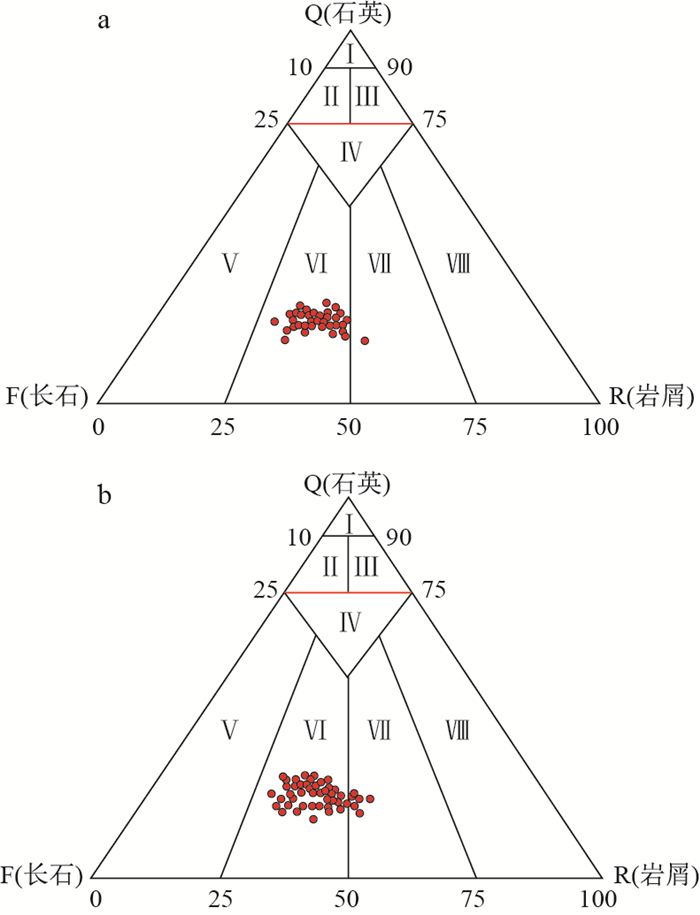

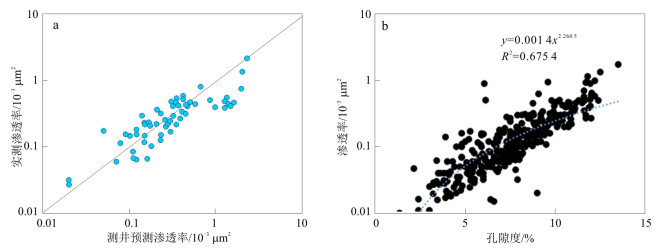






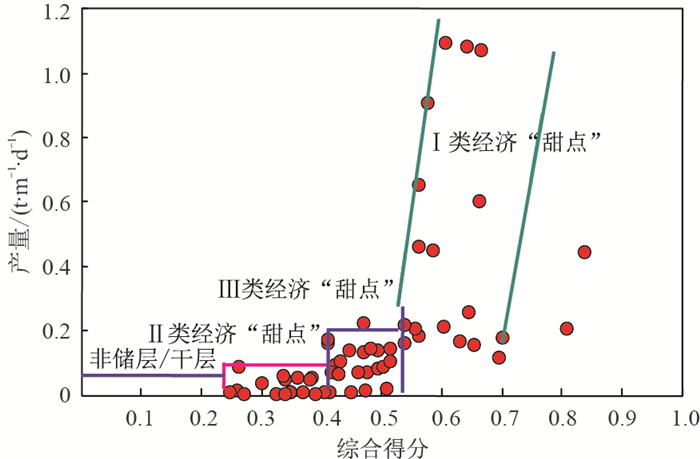
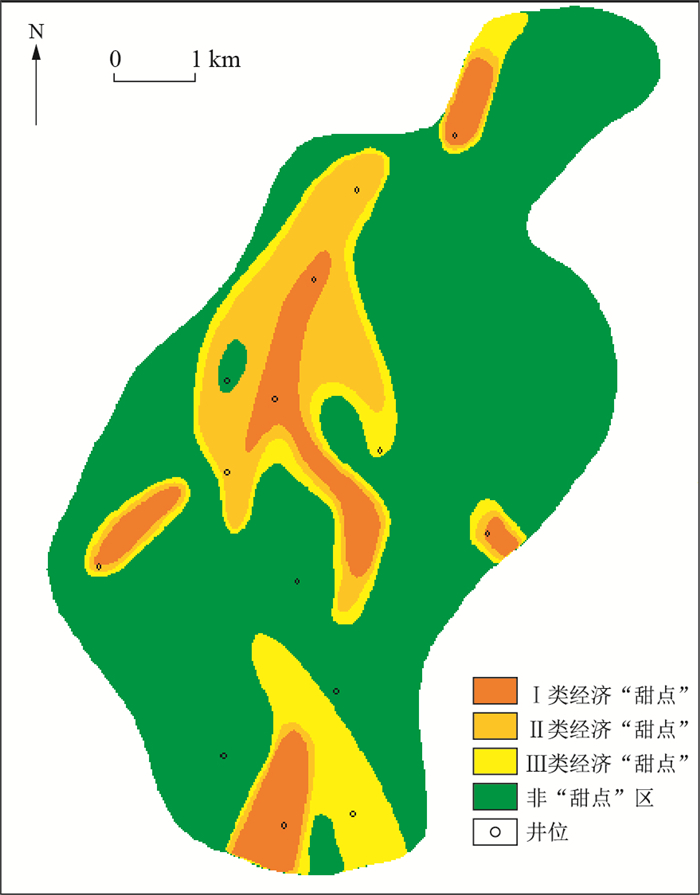

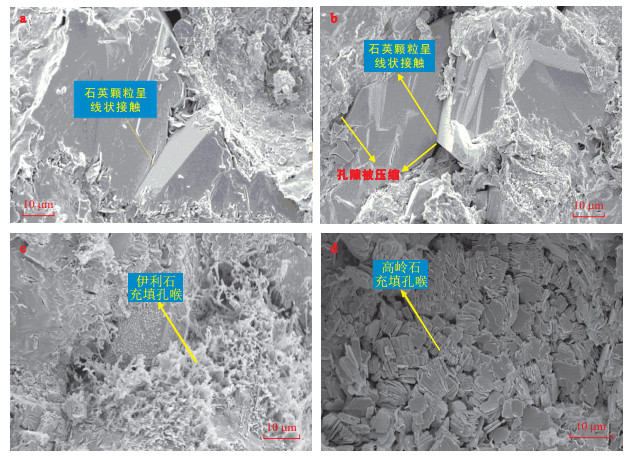



 百度学术
百度学术

